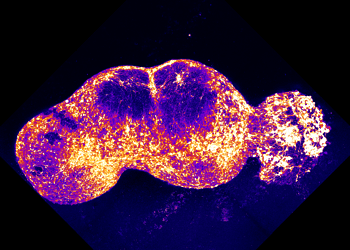
Neurons are the absolute core components of the nervous system that transmit information through electrical and chemical signals. I once wondered how neural activity might sound like, and I imagined something like a huge gridline sprinkled with electricity bolts though out. I didn’t know about the SpikerBox, back then, though. It’s a gadget, developed by educational entrepreneurs Timothy Marzullo and Gregory Gage, which can measure the neural activity of various insects and can be employed in some very interesting experiments, like observing how neural activity is affected by temperature, external electrical signals or … pokes. Beware, you need to cut off a cockroach leg for science!
It’s a very simple set-up made out of a microprocessor, two neural probes, and a speaker, everything powered by a 9V battery. In a demo video for the gadget, its creators explain how it works and how to use it. Just find an invertebrate, like an insect, from under your local rock, cut off one of its legs (it grows back). Then stick one of the needle probes in the femur, and the other a bit higher on the leg. What you’ll hear next is the electrical activity of the still living neural network in the leg. If you’re looking for some graphical representation as well, the device can be tethered to an iPhone or Android phone. Find out more about the SpikerBox at Backyard Brains.






